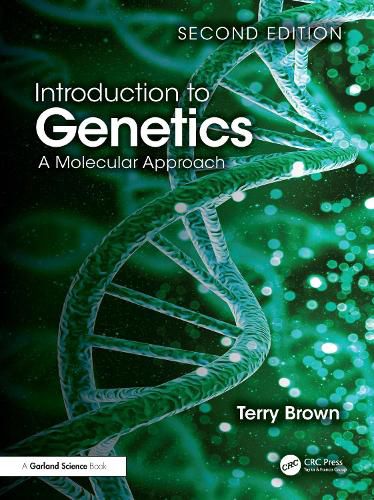Readings Newsletter
Become a Readings Member to make your shopping experience even easier.
Sign in or sign up for free!
You’re not far away from qualifying for FREE standard shipping within Australia
You’ve qualified for FREE standard shipping within Australia
The cart is loading…






Nowadays, genetics focuses on DNA. Just like the first edition, the theme of this new edition, Introduction to Genetics: A Molecular Approach, is therefore the progression from molecules (DNA and genes) to processes (gene expression and DNA replication) to systems (cells, organisms and populations). This progression reflects both the basic logic of life and the way in which modern biological research is structured. The molecular approach is particularly suitable for students for whom genetics is part of a broader program in biology, biochemistry, the biomedical sciences or biotechnology. This book presents the basic facts and concepts with enough depth of knowledge to stimulate students to move on to more advanced aspects of the subject.
This second edition has been thoroughly updated to cover new discoveries and developments in genetics from the last ten years. There are new chapters that introduce important techniques such as DNA sequencing and gene editing, and the applications of genetics in our modern world are covered in chapters describing topics as diverse as gene therapy and the use of ancient DNA to study prehistoric ecosystems.
Key Features:
This book provides a molecular approach to the study of genetics. It is a highly accessible and well-structured book with chapters organized into four parts to aid navigation. It presents high-quality illustrations to elucidate the various concepts and mechanisms. Each chapter ends with a Key Concepts section, which serves to summarize the most essential points. Self-study questions enable the reader to assess their comprehension of chapter content, and discussion topics facilitate a deeper understanding of the material by encouraging conversation and critical evaluation. Key terms are emboldened throughout the text and are listed at the end of each chapter, and definitions can be found in the Glossary. For instructors who adopt the book, an affiliated question bank is free to download.
$9.00 standard shipping within Australia
FREE standard shipping within Australia for orders over $100.00
Express & International shipping calculated at checkout
Nowadays, genetics focuses on DNA. Just like the first edition, the theme of this new edition, Introduction to Genetics: A Molecular Approach, is therefore the progression from molecules (DNA and genes) to processes (gene expression and DNA replication) to systems (cells, organisms and populations). This progression reflects both the basic logic of life and the way in which modern biological research is structured. The molecular approach is particularly suitable for students for whom genetics is part of a broader program in biology, biochemistry, the biomedical sciences or biotechnology. This book presents the basic facts and concepts with enough depth of knowledge to stimulate students to move on to more advanced aspects of the subject.
This second edition has been thoroughly updated to cover new discoveries and developments in genetics from the last ten years. There are new chapters that introduce important techniques such as DNA sequencing and gene editing, and the applications of genetics in our modern world are covered in chapters describing topics as diverse as gene therapy and the use of ancient DNA to study prehistoric ecosystems.
Key Features:
This book provides a molecular approach to the study of genetics. It is a highly accessible and well-structured book with chapters organized into four parts to aid navigation. It presents high-quality illustrations to elucidate the various concepts and mechanisms. Each chapter ends with a Key Concepts section, which serves to summarize the most essential points. Self-study questions enable the reader to assess their comprehension of chapter content, and discussion topics facilitate a deeper understanding of the material by encouraging conversation and critical evaluation. Key terms are emboldened throughout the text and are listed at the end of each chapter, and definitions can be found in the Glossary. For instructors who adopt the book, an affiliated question bank is free to download.